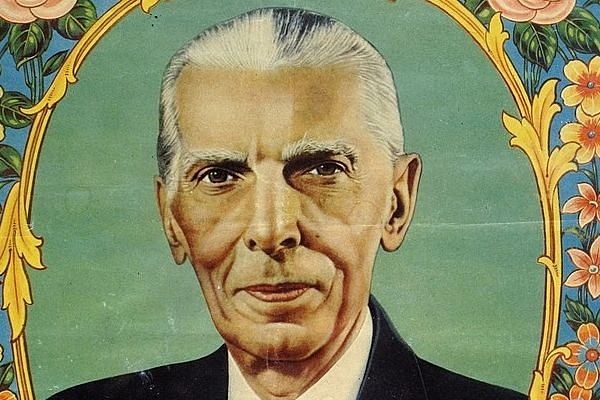Context
Why Our Children Must Learn About India's Partition Horrors

(A portrait of Jinnah from a Pakistani publication - Josephine Powell)
NCERT-approved textbooks for school children have either hidden the full scale of the partition-era rioting and violence. They paint one side alone as the victims and other as aggressors.
Why know about partition: “Those who cannot remember the past are condemned to repeat it”.
In the words of Pakistani historian Ayesha Jalal, Partition was “the central historical event in twentieth century South Asia”.
Scholars estimate around 1 - 2 million dead and 15 million displaced, in one of the greatest migrations on Earth.
The barbarity and scale of violence have been compared to the Holocaust.
Syllabi framing has been done in a way that all of the Partition gets compressed in five paragraphs in Class VIII, and three in Class X.
In Class XII, the textbook gives an impression of largely one way Muslim suffering and most of the chapter repeats the same cliches, equivocation, and sympathy towards the League’s cause.
Students have full chapters on French Revolution, Russian Revolution and Nazi Holocaust.
Chapters on the history of clothing and cricket find a place, but not one full chapter on Partition.
Problematic content: In these textbooks, the fear of Muslims that they will get subjugated due to mixed electorates, and “a spate of clashes between some Hindus and Muslims” as provocation for Muslim League’s “two nation theory” find a sympathetic mention.
The books also falsely contend that the Muslim League wasn’t serious about its demand for Pakistan until very late.
Unjustified blame has been assigned to the Hindu Mahasabha and the RSS with equivocation being made between them and the Muslim League.
The Class X textbook rakes up an obscure Hindu Mahasabha leader, V R Jayakar, blaming him for breakdown of the All Party talks in 1928 over the issue of reserved seats for Muslims in the Central Assembly, and their proportional representation in Bengal and Punjab.
The impression given is that Partition might have been averted but for this intransigence.
Myriad unanswered questions: The whole syllabi is both frivolous and short of the crucial ‘whys’.
Why did the League object to the democratic idea of ‘one man, one vote’?
Why would such large numbers of them refuse to live anymore with their Hindu neighbours?
Why was secession so appealing to Muslim masses?
And lastly, but most importantly, why, and to arrest what trends, was Pakistan conceded?
These questions aren't adequately addressed.
Shielding Islamism: For a tragedy so profound and persistent, it is expected that Islamism as motivation for Partition and as a potent threat to the social fabric, finds recognition in our textbooks.
Hindu suffering through history: From the time Mortimer Durand undertook his task in 1893, every line drawn on the subcontinent to draw boundaries has resulted in Hindu genocides.
The last surviving practitioners of ancient Hinduism in Kafiristan, the Kalash people, left on the north-west of the newly drawn line were slaughtered and converted wholesale within two years of demarcation, by the Afghan, Amir Abdur Rahman Khan.
An entire civilisation was lost. The polytheists of Kafiristan, now named Nuristan, were the only surviving link to Vedic Hinduism of the Harappan period.
In 1971 again, when the eastern and western demarcations under the Radcliffe line fell apart, it was the Hindus being butchered and crossing over boundaries to save their lives.
The fourth attempt in the last 125 years to draw another line and effect a Partition has already resulted in the ethnic cleansing of close to five lakh Hindus in Kashmir Valley.
Sunlight as a disinfectant: Concealing the record of Islamist sectarianism has only helped in inflaming it further.
It isn’t surprising to see that demands like communal reservation and aversion to Vande Mataram, which were central to League “grievances” and formed their justification for Partition, are once again mainstream.
If the idea behind twisting facts is not to risk communalising the majority psyche, it should not be difficult to differentiate between Muslims as a society and Islamism as a doctrine, with examples such as Raheem, Ras Khan, Dara Shukoh and APJ Abdul Kalam.
Bottomline: The continuation of Islamist agenda after 1947 renders the Partition as a cruel joke.
It might have been a different situation had we confronted the tragedy in its entirety instead of tiptoeing around it in our school textbooks.
(Adapted from Vikas Saraswat's article posted here)
Introducing ElectionsHQ + 50 Ground Reports Project
The 2024 elections might seem easy to guess, but there are some important questions that shouldn't be missed.
Do freebies still sway voters? Do people prioritise infrastructure when voting? How will Punjab vote?
The answers to these questions provide great insights into where we, as a country, are headed in the years to come.
Swarajya is starting a project with an aim to do 50 solid ground stories and a smart commentary service on WhatsApp, a one-of-a-kind. We'd love your support during this election season.
Click below to contribute.
Latest